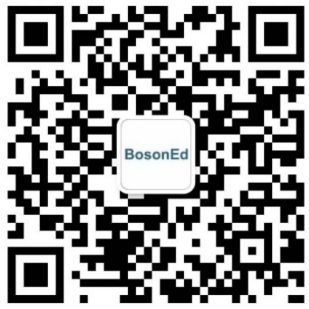Explore the Top 50 Universities: Pennsylvania and the South (Virginia, North Carolina, Georgia, and Texas)
Today is the final piece of our top 50 universities series, where we'll be discussing universities in the Southern states (Texas, North Carolina, Virginia, and Georgia), and finally, in my home state of Pennsylvania.
South (Virginia, North Carolina, Georgia, and Texas)
During my time in college, I didn't know much about schools in the South. As a student studying in Boston, Southern schools always held a certain mysterious allure for me: traditional and conservative. It wasn't until I started working as an admissions officer that I discovered many excellent and underrated colleges in the South.
Virginia
University of Virginia
Founded by one of the Founding Fathers, Thomas Jefferson, the significance of the University of Virginia goes beyond being the best public university in Virginia. UVA has always been considered one of the best public universities in the United States. In the 2024 U.S. News rankings, UVA is ranked 24th nationwide. In my personal opinion, UVA is a highly regarded institution. I have visited UVA and Charlottesville, where it is located, multiple times, and I have a very positive impression of UVA. Not only because two of the consultants at BosonEd have graduated from UVA and worked in UVA's admissions office for many years, but I also really like Charlottesville. It is a university town with beautiful surroundings, convenient living, safety, and a high quality of residents. It is a very livable small city.
The university has a total of 17,496 undergraduate students, 8,653 master's and doctoral students, for a total of 26,149. In 2022, there were 50,926 applicants for freshmen, with 9,503 admitted, resulting in an acceptance rate of 18.66%. There were 83,368 students placed on the waitlist, of which only 7 were eventually admitted.
For admitted students at UVA, the 25th percentile SAT score is 1400, and the 75th percentile is 1540. 77.84% of students scored between 1400 and 1600 on the SAT. Additionally, 90% of students have ACT scores between 30 and 36. Furthermore, 85% of students rank in the top 10% of their high school classes.
Regarding transfer applications, in 2022, there were 3,562 transfer applicants, and 1,245 were admitted, resulting in a transfer acceptance rate of 34.95%. Although the acceptance rate is high, there is a preference for in-state students.
UVA excels in various fields, including Business, Engineering, International Relations, Sociology, Economics, and Biology.
North Carolina
Duke University
Duke University is the best university in North Carolina, often referred to as the "Harvard of the South." It is located in Durham, North Carolina, just a 20-minute drive from Chapel Hill. The university has a total of 6,883 undergraduate students, 10,737 master's and doctoral students, making a total of 17,620 students. In the latest 2024 U.S. News rankings, Duke is ranked 7th in the United States, solidifying its position as the top university in the South.
In terms of applications, the most recent data is from 2021, with 49,523 applications received. Of these, 2,911 students were admitted, resulting in an acceptance rate of 5.8%. While Duke does not disclose how many students were placed on the waiting list, they did announce that 88 students were eventually admitted from the waitlist, which is a considerable number. Regarding application materials, naturally, all components are deemed highly important: course rigor, transcripts, standardized test scores, application essays, letters of recommendation, extracurricular activities, talents, personal qualities/character - all should be outstanding. The only distinction from Ivy League schools is that interviews are not as crucial at Duke. Among admitted students at Duke, the SAT score range is from 1490, with the 75th percentile at 1560. In terms of SAT subject breakdown, 87.2% of students scored between 700 and 800 in Evidenced-Based Reading and Writing, while 88.8% scored between 700 and 800 in Math. For ACT scores, the 25th percentile is 33, and the 75th percentile is 35. Furthermore, 95% of students were in the top 10% of their high school class.
Regarding transfer applications, in 2012, 1,679 students applied, and only 81 were admitted, resulting in an acceptance rate of only 4.8%.
Duke is a very generous university, with an average need-based financial aid package of $56,197, and an average non-need-based scholarship of $78,610.
The University of North Carolina at Chapel Hill (UNC)
The University of North Carolina at Chapel Hill (UNC) is the flagship campus of the University of North Carolina system and is often regarded, alongside the University of Virginia, as the best public university in the South. In the latest US News rankings, UNC surpassed UVA, ranking 22nd (although I personally believe UVA is a better school). Established in 1789, UNC is one of the earliest public universities in the United States (the very first being the University of Georgia, founded in 1785). Its founding principle was "the university of the people," and to this day, UNC remains a down-to-earth, accessible institution among the top 30 universities.
As of 2021, UNC Chapel Hill had 19,897 undergraduate students, 11,836 graduate students, for a total of 31,733 students. During the fall application cycle, a total of 53,776 students applied for admission. Of those, 10,347 were admitted, resulting in an acceptance rate of 19.24%. However, only 4,677 students enrolled, indicating that for many students, North Carolina may not be their first choice. This is also related to the fact that North Carolina is the top choice for students who apply for Ivies’ REA (Restricted Early Action). In undergraduate admissions, out-of-state applicants face intense competition. Of the admitted freshmen, 82% are in-state students, and 5% are international students. A total of 8,957 students were placed on the waitlist, of which 647 were ultimately admitted.
In the application process, course rigor, standardized test scores, application essays, and letters of recommendation are considered very important. High school GPA and class rank are deemed important. Interestingly, UNC Chapel Hill is the first school I've encountered where standardized test scores are considered more important than high school grades. UNC is a somewhat test-sensitive school, requiring students to submit standardized test scores. The 25th percentile SAT score is 1330, the 75th percentile is 1500, and for the ACT, the 25th percentile is 29, and the 75th percentile is 33. 95% of admitted freshmen have a high school GPA of 4.0.
Regarding transfer applications, for the fall 2021 intake, 3,554 students applied, of which 1,666 were admitted, resulting in a transfer acceptance rate of 46.88%. However, it's important to note that being a state university, state residency is highly significant in the admission process. When looking at the 46.88% acceptance rate, this factor should be taken into consideration. UNC has both fall and summer transfer enrollments, but only one application cycle and deadline.
UNC's strengths lie in fields such as media, business, chemistry, sociology, English, biology, and international relations.
Georgia
Emory University
Emory University is the top university in Georgia, located in Atlanta. In the 2024 U.S. News rankings, Emory is ranked 24th in the United States. Emory has long competed with Duke for the title of "Harvard of the South," although it's worth noting that Duke is indeed much stronger. Additionally, in my opinion, Texas's Rice University and Tennessee's Vanderbilt University are also formidable contenders in the South. This competition may be influenced by the relatively close proximity of Georgia to North Carolina.
Compared to Northeastern universities, Emory may lack the atmosphere of a liberal arts college, but it places a strong emphasis on professional education. Established in 1836 by the Methodist Episcopal Church, the university is named after bishop, John Emory. In the application, Emory requires students to choose between two campuses: Emory College in Atlanta and the Oxford campus, which is a 45-minute drive from Atlanta. The main Emory campus follows a more typical four-year university style, while the Oxford campus, with approximately 1,000 students, offers a smaller liberal arts college atmosphere. After two years at Oxford, all students complete their final two years of study at the main campus. Emory's strengths lie in programs such as the business school, biology, chemistry, quantitative sciences, political science, nursing, and neuroscience.
As of 2022, Emory had a total of 7,101 undergraduate students and 7,751 graduate students, for a total of 14,852 students. For undergraduate admissions, there were 33,179 applications received, with 3,767 students admitted, resulting in an acceptance rate of 11.35%. Additionally, 6,448 students were placed on the waiting list, and ultimately, 107 were admitted. The acceptance rate from the waiting list was a mere 1.6%. Beyond high school grades, Emory places significant emphasis on extracurricular activities, personal qualities/character, and special talents. Of course, essays and letters of recommendation are also of utmost importance. The SAT median score was 1500, with the 75th percentile at 1530 and the 25th percentile at 1450. Among admitted students, 81% ranked in the top 10% of their high school class.
Regarding transfer applications, in 2022, there were 2,020 applications, with 386 students admitted, resulting in an acceptance rate of 18.96%. Emory, like many private universities, does not have a strong inclination towards admitting transfer students.
Texas
Rice University
Rice University was founded by the Texas cotton magnate William Marsh Rice in 1912. It is located in the heart of downtown Houston. As of 2022, the university has a total of 4,494 undergraduate students, 4,198 master's and doctoral students, totaling 8,672.
In terms of admission data, for the fall 2022 intake, there were 31,443 applicants, of which 2,730 were admitted, resulting in an acceptance rate of 8.7%. There were 4,244 students placed on the waitlist, but none were ultimately admitted. So, if you find yourself on Rice's waitlist, it's better not to wait too long. Regarding application materials, course difficulty, GPA, essays, recommendation letters, extracurricular activities, and personal qualities are all considered very important. Among the admitted students, 53% submitted SAT scores, while 23% submitted ACT scores. The median SAT score was 1530, and the median ACT score was 35.
As for transfer applications, for the fall 2022 intake, there were a total of 1,319 applicants, of which 66 were admitted. This resulted in a transfer acceptance rate of 5%. Rice is not known for being particularly transfer-friendly.
From its founding, Rice has been committed to establishing an affordable university for most families. Therefore, Rice adheres to a 100% need-based financial aid policy, and the scholarships offered to international students are quite generous, with an average value of $64,654. However, only 23% of international students receive scholarships.
Rice University excels in fields such as engineering, architecture, music, computer science, physical therapy (ranked No.1 in the U.S.), biology, and economics.
University of Texas at Austin
Regardless of who ranks as the best public university in the United States, UT Austin is sure to be on the list. Located in the capital city of Texas, Austin, it has consistently been ranked among the top few most livable cities in America by various magazines. As of 2022, the university has a total of 41,309 undergraduate students, 11,075 graduate and doctoral students, making a total of 52,384 students.
The most recent data for undergraduate admissions in 2022 indicates that a total of 60,092 students applied for freshman admission, of which 18,770 were ultimately admitted. UT Austin does not have a waitlist. Regarding transfer applications, a total of 6,961 students applied for transfer admission. Of these, 2,358 were admitted. However, it's worth noting that there is a significant preference for in-state transfer students. UT Austin accepts transfer applications for three terms: fall, spring, and summer.
Overall, the application difficulty for Austin is not very high. The university's strengths lie in fields such as business (especially accounting), communication, engineering, and computer science.
Pennsylvania
Finally, let’s move onto my home state, Pennsylvania. In the first episode, I mentioned Pennsylvania, which I believe is the state with the most diverse and abundant university resources in the United States. Here, you have the Ivy League University of Pennsylvania, the computer science powerhouse Carnegie Mellon, as well as mid-tier options like Villanova and Lehigh. There are also down-to-earth choices like Penn State and the University of Pittsburgh, along with highly-ranked liberal arts colleges such as Swarthmore. Plus, there are colleges like Haverford, Bryn Mawr, Franklin & Marshall, and Bucknell that offer less fiercely competitive environments. Pennsylvania also values professional education, with institutions like Drexel and Temple.
University of Pennsylvania
Let's begin with the flagship university of Pennsylvania, the Ivy League institution, the University of Pennsylvania, often referred to as Penn. The recent Nobel Prize in Physiology Medicine announced this month has once again put Penn in the headlines. When people think of Penn, they often associate it with the Wharton School, engineering, medicine, and nursing.
Since Penn is located in Philadelphia where I currently reside, I'm quite familiar with it. Among the Ivy League schools, Penn strikes the best balance between campus atmosphere and urban surroundings. While Columbia is in bustling Manhattan, its campus, to be honest, isn't particularly striking or comfortable. On the other hand, other Ivy League campuses can feel quite isolated. In my opinion, Penn does the best job of blending the two. Penn is also one of the few Ivy League schools with a significant "school spirit," and a place where students can achieve a balanced life between academics and other pursuits. Additionally, Penn students have a particularly strong affinity for their school, and the alumni network is very supportive.
Let's take a look at the admission data for 2022. The university had a total of 9,717 undergraduate students and 12,226 graduate students. In the application materials, course difficulty, GPA, standardized test scores, essays, recommendation letters, and personal qualities were considered very important. Class rank, interviews, extracurricular activities, and special talents were deemed important. Other factors were considered as well.
Although Penn is test-optional, standardized test scores are still reviewed and hold significant weight. Among admitted students, 48% submitted SAT scores, while 23% submitted ACT scores, totaling 71%. 25% of students had SAT scores above 1570, with the lowest SAT score being 1500. In terms of GPA, 90% of students had a GPA of 3.75 or higher. Early decision applications to Penn provide a clear advantage; over half of the incoming class is admitted through ED. Therefore, if Penn is your dream school, applying early is highly recommended. Out of 3,351 students on the waitlist, 17 were ultimately admitted.
Regarding transfer applications, there were a total of 3,513 applicants last year, of which 185 were admitted, resulting in a transfer acceptance rate of 5%. Submission of high school and undergraduate transcripts, application essays, and being in good standing at the current institution are all very important for transfer applicants. Penn's strengths lie in business, engineering, nursing, biology, and medicine.
Carnegie Mellon University
Let's move to the western city of Pennsylvania, the steel city Pittsburgh. Here, we have Carnegie Mellon University, and the University of Pittsburgh. We'll now introduce Carnegie Mellon.
Carnegie Mellon University was formed by the merger of two institutions. In 1900, the steel magnate Andrew Carnegie established a technical school in Pittsburgh, primarily to provide education for the city's blue-collar workers. In 1967, the Carnegie Institute of Technology and Mellon Institute merged to create the Carnegie Mellon University that we know today. Carnegie Mellon's campus is very quiet and beautiful, forming a university community along with the University of Pittsburgh in the picturesque and serene suburbs of Pittsburgh.
As of 2022, the university has a total of 7,509 undergraduate students, 9,270 graduate and doctoral students, making a total of 16,779, which isn't considered a particularly large institution. In terms of application data, in 2022, there were 34,261 applicants, of which 3,873 were admitted, resulting in an acceptance rate of 11%. 8,936 people were placed on the waitlist, and ultimately, 43 were admitted.
The most important factors for applying to Carnegie Mellon are high school grades, essays, recommendation letters, extracurricular activities, personal qualities, and volunteer experience. In fact, Carnegie Mellon considers even more factors than Penn, but the difference is that special talents and interviews, which are important at Penn, are not as critical at Carnegie Mellon. On the other hand, Carnegie Mellon places more importance on volunteer experience, which Penn doesn't view as heavily.
Although standardized tests are optional, over 70% of admitted students submitted either SAT or ACT scores. So, as we've always said, "optional is never optional." Unless it's a test-blind school like the University of California, if you're aiming for the top, it's still important to have standardized test scores. Among admitted students, 89.1% had GPAs of 3.75 or higher.
Regarding transfer applications, in 2022, there were 1,310 applicants, of which 93 were admitted, resulting in a transfer acceptance rate of 7%, which is lower than that of freshman applicants. So, not all schools are transfer friendly.
When it comes to Carnegie Mellon's strengths, the first and foremost is computer science. Its engineering programs are also very strong. Another outstanding program at Carnegie Mellon, with an even lower acceptance rate than computer science, is its School of Drama. Theater, music, art, and design are all strong programs at the university.
In terms of scholarships, Carnegie Mellon is not very generous. 97% of U.S. students can receive an average of $38,817 in need-based financial aid, while only 8% of students receive merit-based aid. Carnegie Mellon has a no-aid policy for international students, so all international students do not receive any financial aid.
Swarthmore
Swarthmore College, located in the town of Swarthmore in the suburbs of Philadelphia, is tied with Pomona and Wellesley for fourth place in the US News Liberal Arts College Rankings. Swarthmore students often describe themselves as "Nerdy". It ranks among the top five universities in terms of the percentage of graduates who apply for Ph.D. programs, with 22%.
As of 2023, the college has a total of 1,625 students. The freshman return rate is 96%, which holds valuable insights for transfer applicants. In terms of application data, in 2023, there were 14,707 applicants, of which 2,019 were admitted, resulting in an acceptance rate of 6.9%.
One major difference between Swarthmore and other schools in terms of evaluating application materials is that the admissions officers at Swarthmore rate personal qualities as "Very Important," while other schools categorize it as "considered." This indicates Swarthmore's emphasis on individual qualities and diversity. This reminds us to take this into full consideration when writing application essays. Other factors such as transcripts, class rank, essays, and recommendation letters are also considered the most important.
The average SAT score is 1500, and the average ACT score is 33. 87% of students scored above 700 in SAT Evidenced-Based Reading and Writing, and 91% scored above 700 in Math. 89% of students had a high school GPA within the top 10%. Overlapping schools in applications include Amherst, Bowdoin, Carleton, Pomona, Williams, Wesleyan, Yale, Brown.
Regarding transfer applications, in 2022, there were 454 transfer applicants, of which 11 were admitted, resulting in a transfer acceptance rate of a mere 2.4%.
Swarthmore's strengths lie in Economics, Computer Science, Engineering, Biology, Mathematics, Political Science, and Visual Arts. All students are required to take a minimum of two courses in the humanities, natural sciences and engineering, and social sciences, as well as meet foreign language and physical education requirements, and complete three writing-intensive courses in order to graduate.
Villanova
Villanova University, located in the suburbs of Philadelphia, is a Catholic private university that's about a 30-minute drive away. While Villanova is relatively easier to get into among the top 50 schools, it offers excellent programs. Its strengths lie in Finance, Engineering, Nursing, Economics, and Biology. Additionally, Villanova is a private university with a small student body, meaning professors can provide more attention to students, which is something that public universities can't compare to. Finally, Villanova's location is excellent, situated in the affluent Main Line region of Philadelphia with a beautiful environment and a very safe community. It's also only a half-hour to 40-minute drive from Philadelphia.
As of 2023, the university has a total of 6,989 undergraduate students and 3,394 graduate and doctoral students, making a total of 10,383 students. In 2022, there were 23,835 applicants, of which 5,576 were admitted, resulting in an acceptance rate of 23.4%. 3,355 people were placed on the waitlist, and ultimately, 36 were admitted. The average SAT score is 1440, and the ACT average is 33. 35% of admitted students had a GPA of 4.0, and 40% had a GPA between 3.75 and 3.99.
Regarding transfer applications, in the fall semester of 2022, there were 588 transfer applicants, of which 140 were admitted, resulting in a transfer acceptance rate of 23.8%, slightly higher than that of freshman applicants.
Final Note: A few predictions from me on this year's college application trends. 1) Due to recent controversies, there might be a decrease in students applying to Harvard and Penn, particularly because of recent comments regarding Israel. 2) UVA admitted too many students last year, so they might reduce the number of acceptances this year. 3) There might be an increase in students applying to UNC this year, partly due to an improvement in its rankings, and also because of the outcome of the AA lawsuit, leading more students to believe they have a chance.

















